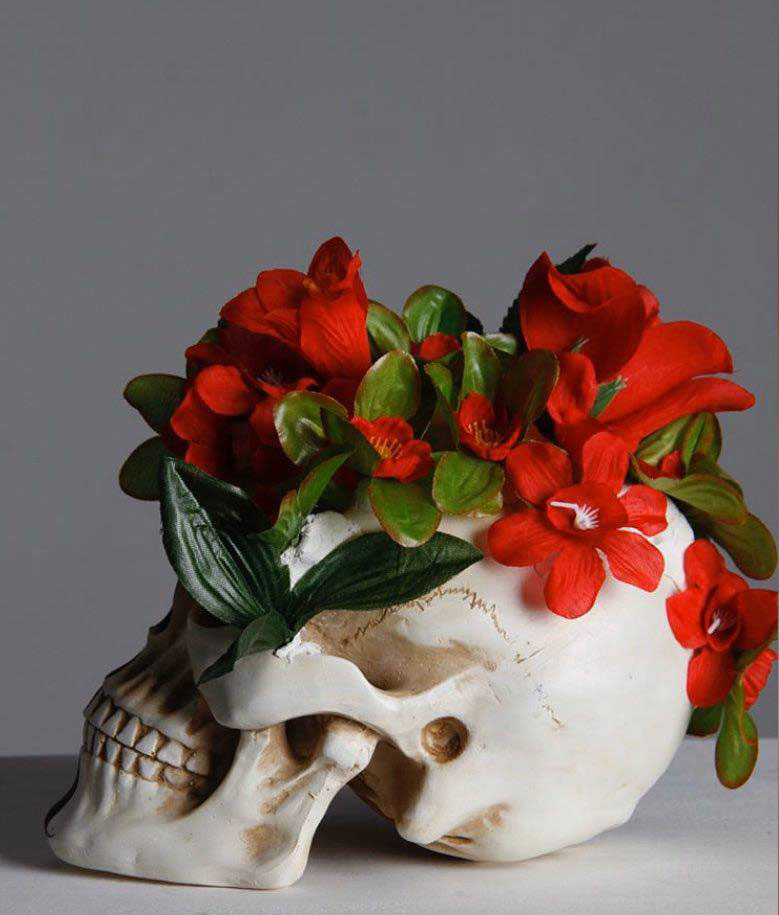NEW COMERS: Aikaterini Kanakaki
 Aikaterini Kanakaki is a young, very talented and upcoming artist- student at the 3rd year of the University of the Creative Arts in Canterbury, England. Although I know her since a very young age, I first saw her works last May and I was impressed with the way she is using classical methods like: drawing and embroidery, combined with a very contemporary and fresh iconography. What characterizes it and distinguishes her work is the maturity, the way she deals and approaches existential issues, with an unparalleled sensitivity. She celebrates the life and honors it with flowers, an element that we find in almost all of her works, which for her represent the love.
Aikaterini Kanakaki is a young, very talented and upcoming artist- student at the 3rd year of the University of the Creative Arts in Canterbury, England. Although I know her since a very young age, I first saw her works last May and I was impressed with the way she is using classical methods like: drawing and embroidery, combined with a very contemporary and fresh iconography. What characterizes it and distinguishes her work is the maturity, the way she deals and approaches existential issues, with an unparalleled sensitivity. She celebrates the life and honors it with flowers, an element that we find in almost all of her works, which for her represent the love.
By Efi Michalarou
Photo: Aikaterini Kanakaki Archive
Ms. Kanakaki why did you choose England and this University to study? What was it you were looking for and looking for in Art?
My studies in England were not scheduled. My first choice was the SMFA Tufts University in Boston where I got a scholarship. I finally decided to attend the university I am now (University for the Creative Arts) for the simple reason that I would be closer to home. What I have always sought after in art is innovation, new ideas and collaboration between artists and galleries for dynamic exhibitions with interest, whether group or individual.
Although you are in the 3rd year of your studies you have a large production of works of art which is complete and very well structured compared to other young artists of your age. Does this have anything to do with the family environment you grew up in, the influences you had and some advice you might have gotten from your parents?
The truth is that since I was a little girl I have been surrounded by works of art. My parents support me in my decisions. The decision to follow art was purely mine, due to my emotionally attached to the gallery. Art is a huge part of my life, and I wish to continue learning to better my creative instinct.
By watching your work, we know that you focus on the human body and what happens after death. How and when did these existential concerns arise?
My idea of reincarnation began in the first year of university that we had a project titled the “first step”. This is the reason for the selection of the skeleton as the most appropriate form in order for the adventure of the inception and development of a structure to be narrated. This structure, literally, concerns not only the human body but, in a wider sense, the construction of a concept which evolves itself formalistically and ideologically too.
What is the role of flowers, how did they arise and what their symbolism did?
The flowers in my works are not to decorate the skeleton but to prepare its transformation into a different version of existence.
Why do you choose to make ink drawings on the canvas and how the embroidery then emerges, which while it is traditional is also a post modern the way you use it.
The ink drawings were based on my desire to learn design. Specifically, these designs were made first on paper and then printed on linen cloth in order to give the true size but also larger of the frame. My idea of embroidery came after. As an artist, I like to use traditional techniques in new ideas.
Their transformation, in the new section of works, is added black tulle, a purely female material, which refers to the sexual-female nature and the embroidery on it, while the already painted canvas is wrapped. Do you transition from death and post-death life to life by holding flowers firmly as a key element? What is the idea behind these projects and what message do you want to convey?
These works are a turning point in my work that can be considered a hymn to life where I use the embroidery of the living form framed with flowers that in this case mean love for life.
Download Greek Version of Interview here.
First Publication: www.dreamideamachine.com
© Interview-Efi Michalarou






